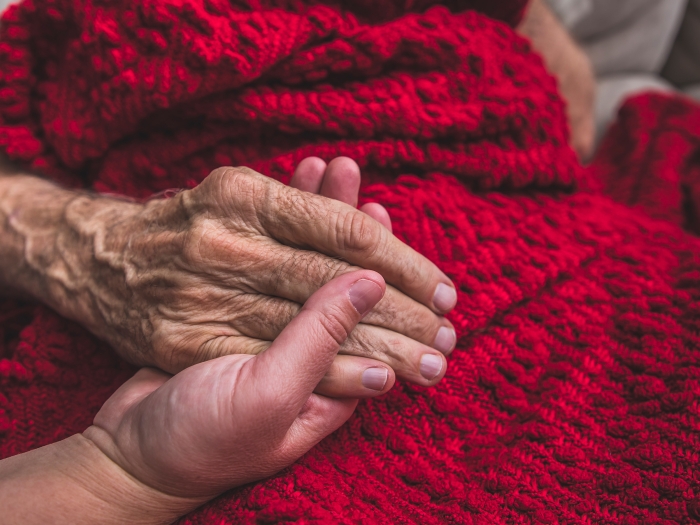Two studies show full hospitals and staffing shortages combined leave patients waiting hours for beds or leaving without being seen by a physician at all.
10:50 AM
Author |

Despite decades of effort to change emergency care at American hospitals and cope with ever-growing numbers of patient visits, the system is showing increasing signs of severe strain, according to two studies.
The work has implications for health policy, providing data that shows the key role of the availability of staffed hospital beds in the ability of emergency departments to serve patients, whether or not COVID-19 cases are surging.
The studies, based on electronic health record data from across the country, are published in JAMA Network Open by a team from the VA Ann Arbor Healthcare System, the University of Michigan Institute for Healthcare Policy and Innovation, and Yale University.
Alex Janke, M.D., M.H.S., the lead author of both studies, is a National Clinician Scholar at the VAAHS and IHPI who currently provides emergency care at the VAAHS and at Hurley Hospital in Flint, Mich. He notes that the studies are a limited window into an enormous problem, and better data will be essential to guiding government entities, insurers and health systems into sustainable improvements.
SEE ALSO: Home is where the hospital is
"Emergency departments are the levees on acute care demands in the U.S.," said Janke, who trained at Yale before coming to Michigan. "While once there were decompression periods in even the busiest EDs, what we are seeing here, as others are seeing in Canada and the U.K., demonstrates that the levees have broken."
In one study, the researchers examined the percentage of emergency department patients who left without being seen by a physician – likely due to long wait times in crowded conditions.
The median percentage across all hospitals in the study doubled from 2017 to the end of 2021, from just over 1% to just over 2%.
But then the researchers dove deeper into data from the 1,769 hospitals in the study sample at the end of 2021, dividing them up by percentage of patients who left without being seen.
A full 5% of hospitals had more than 10% of the patients who entered their emergency departments leave before they could have a medical evaluation. That's more than double what it was in the same tier of hospitals in 2017 and the early part of 2020.
In the second study, the researchers calculated the number of hours that emergency department patients who required hospitalization had to wait, or "board", in the ED before they actually got a hospital bed.
They looked at how the overall occupancy of each hospital at the time of boarding was associated with how long patients had to wait in the ED for a bed.
While once there were decompression periods in even the busiest EDs, what we are seeing here, as others are seeing in Canada and the U.K., demonstrates that the levees have broken.Alex Janke, M.D., M.H.S.
The national accrediting body for hospitals recommends that boarding times be kept below four hours, to prevent delays in care and known safety issues.
But the study shows that when hospitals had more than 85% of their staffed beds already occupied by other patients, admitted patients in emergency departments had to wait for their bed more than four hours nearly 90% of the time. In fact, such patients found themselves waiting on average more than 6.5 hours for a bed, compared with 2.4 hours during times when hospitals were less full.
By the end of 2021, the median boarding times nationally were approaching the maximum recommended time, at 3.4 hours. At the 5% of hospitals with the highest occupancy, median boarding times were more than nine hours.
SEE ALSO: An emergency department-based ICU improves survival without raising costs
Nationally, the percentage of hospital beds occupied at any given time didn't change much from 2020 to 2021. But the number of emergency visits grew, and boarding times worsened.
The researchers note that their data source doesn't allow them to dive into what factors made hospitals more likely to have high occupancy, long boarding times or high percentages of emergency department patients leaving before they could be seen.
They do note, however, that the strain isn't evenly distributed across hospitals that have emergency departments.
Like Podcasts? Add the Michigan Medicine News Break on Spotify, Apple Podcasts or anywhere you listen to podcasts.
"Boarding and overcrowding in EDs have been a growing issue for over 30 years. Incredible work has been done in the emergency medicine community to make our care better, more accurate and nimbler using limited resources," said Janke. "But without more space and staff in the hospital, and downstream in skilled nursing facilities and across community settings, this crisis will continue."
In addition to Janke, the study's authors are Yale's Edward R. Melnick, M.D., M.H.S and Arjun K. Venkatesh, M.D., M.B.A., M.H.S. "This is not an ED management issue," said Venkatesh, an associate professor of emergency medicine at Yale School of Medicine. "These are indicators of overwhelmed resources and symptoms of deeper problems in the health care system."
Live your healthiest life: Get tips from top experts weekly. Subscribe to the Michigan Health blog newsletter
Headlines from the frontlines: The power of scientific discovery harnessed and delivered to your inbox every week. Subscribe to the Michigan Health Lab blog newsletterVeterans Affairs Office of Academic Affiliations, University of Michigan, Society for Academic Emergency Medicine Foundation
Papers cited:
"Hospital Occupancy and Emergency Department Boarding During the COVID-19 Pandemic," JAMA Network Open. DOI: 10.1001/jamanetworkopen.2022.33964
"Monthly Rates of Patients Who Left Before Accessing Care in US Emergency Departments," JAMA Network Open. DOI: 10.1001/jamanetworkopen.2022.3370

Explore a variety of health care news & stories by visiting the Health Lab home page for more articles.

Department of Communication at Michigan Medicine
Want top health & research news weekly? Sign up for Health Lab’s newsletters today!





